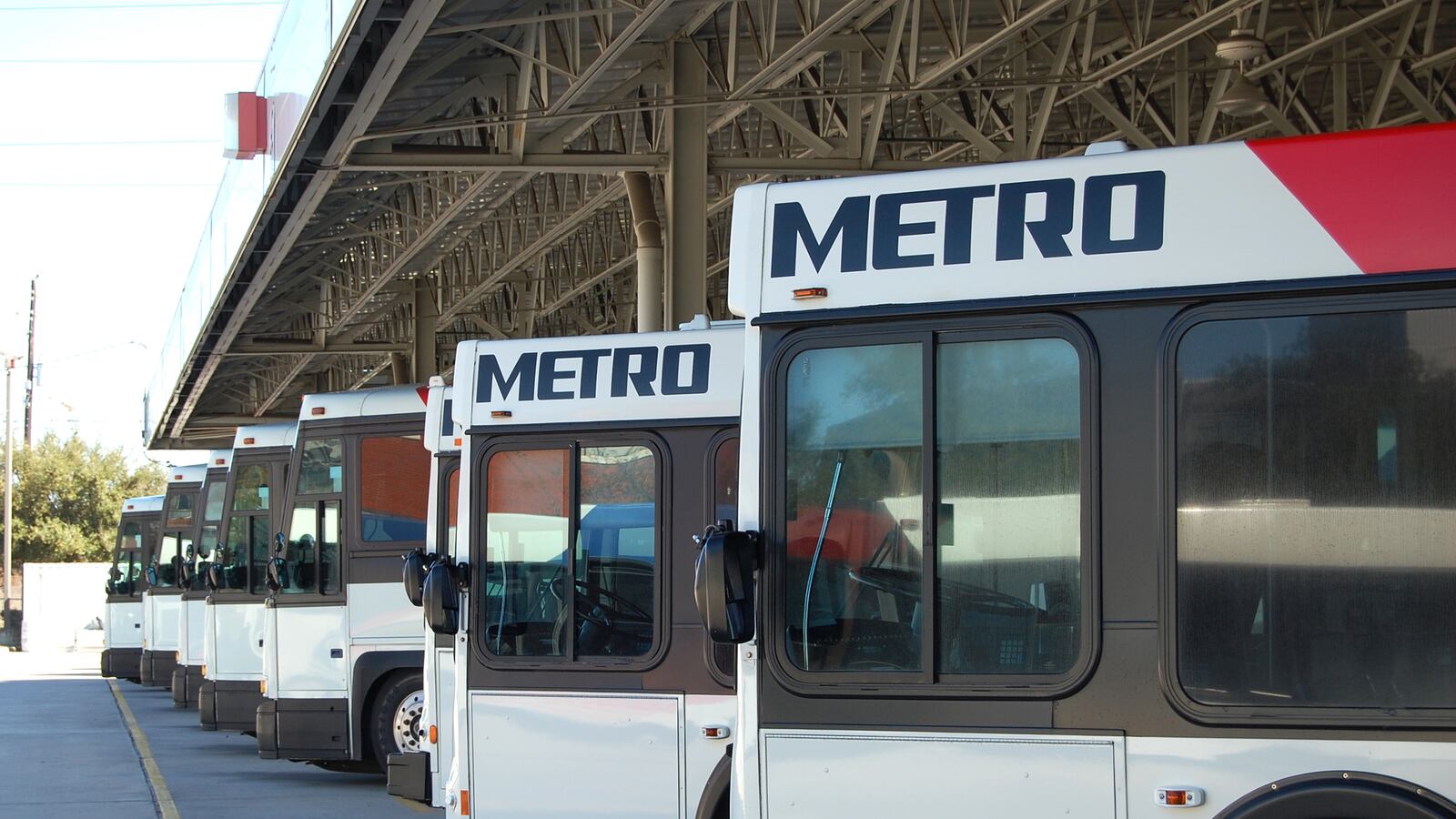One of the most radical experiments in American public transportation is being conducted right now in Houston.
Yes, Houston—the sprawling oiltown where life without a car seems almost unlivable. But if the experiment works as planned, a carfree lifestyle will be a real possibility for hundreds of thousands of Houstonians.
Houston’s public transit agency, Metro, has redrawn its entire system—a route-by-route makeover that is intended to dramatically increase access and ridership. They’re doing this by making a major shift not only in the paths of bus routes but also in the frequency of bus service along key routes.
The redesign, which was rolled out August 16, will double the amount of people living within a half-mile of high-frequency bus service, and shift routes to focus on areas with high concentrations of jobs and riders.
It’s a strategy that other cities—including Houston’s cousin in decentralized urbanism, Los Angeles—are considering. If Houston’s transit overhaul works as planned, it could serve as a model for a widespread rethinking of how buses can work in American cities.
Buses are the backbone of public transit in the United States. While a handful of cities like New York and Washington, D.C., have well-used rail systems, the majority of big American cities either didn’t build subways when they should have or don’t have the urban form and character to accommodate them now.
Buses, by and large, are the solution. And though they carry a perhaps unfair reputation as a second-class service, buses can be incredibly nimble and effective in getting people in and around cities—when operated right.
For example, because they aren’t fixed to routes laid in steel rail, the paths they follow can be altered to meet the changing demands of living cities.
To work with the system they have, transit officials in Houston decided in 2013 to rethink their bus system from scratch, a process that hadn’t happened since the 1970s.
Instead of simply routing buses to reach the city’s far-strewn edges and funneling riders into downtown, Metro officials and their consultants sought to reorient their routes to the places that people actually live, work and want to go.
After an 18-month planning process including surveys and demographic studies, the Metro team identified 23 routes that could create a grid of high-frequency service through the core of the city.
On the new high-frequency routes approved by the Metro board in February, bus service will run every 15 minutes, 15 hours a day, seven days a week, making it much easier to catch a bus when needed as opposed to planning a bus ride around a limited schedule.
Secondary and tertiary lines, running less frequently, were also reconfigured. Under the new system map, more than a million people will be within a half-mile walk of a high-frequency bus stop, a change that’s expected to boost ridership on a system that currently sees about 275,000 riders per average weekday.
It’s a dramatic improvement in service, and one that’s been achieved with almost no increase in the system’s operating costs. “I think this is one of the most important things this city or any city can do to improve its transit system,” Metro Board member Christof Spieler told Houston Public Media.
Of course, the only practical way to increase service frequency but not increase operating costs is to cut service. That meant trimming routes in areas with low ridership and the sort of suburban form that makes bus use inconvenient and impractical.
According to Metro, nearly 94 percent of riders will be able to access service at the same stop they were using before the redesign. All but 0.04 percent of riders will have a local bus service within a half-mile, according to officials.
Jarrett Walker, one of the lead consultants on the project, explained on the radio program Here & Now that transit systems are often torn between providing bus routes with high ridership and providing wide coverage to meet the lifeline needs of all its citizens.
Though in the past the system may have been planned to have good coverage, the redesigned system is intended to increase ridership.
Boosting ridership without reducing coverage, Walker argues, is not possible without raising operating costs, something few systems are eager to do. “The neglect of bus systems in this country really ought to be much more scandalous than it is,” Walker says.
But, slowly, transit systems are trying to improve bus service, often through limited-stop express buses or station-based bus rapid transit that gets riders across town faster.
And it’s not just Houston that’s considering a full-scale system redesign. In Los Angeles, the transit agency, also known as Metro, is planning its own cost-neutral rerouting, with service cuts included.
Los Angeles, like Houston, is a multi-centric, maybe even post-centric city. By adjusting its bus service to respond to ridership patterns and population dynamics, L.A.’s public transit system could become a more relevant and convenient transportation option for much, though certainly not all, of the city.
Like many American cities, Houston and Los Angeles have significant challenges when it comes to providing public transportation.
Their car-oriented urban form and widely dispersed populations make almost any proposed system seem oppressively inadequate. But these redesign efforts suggest that even the most sprawling, car-reliant cities in the U.S. can turn the bus into a valid, and maybe even crucial, part of their transportation systems.






